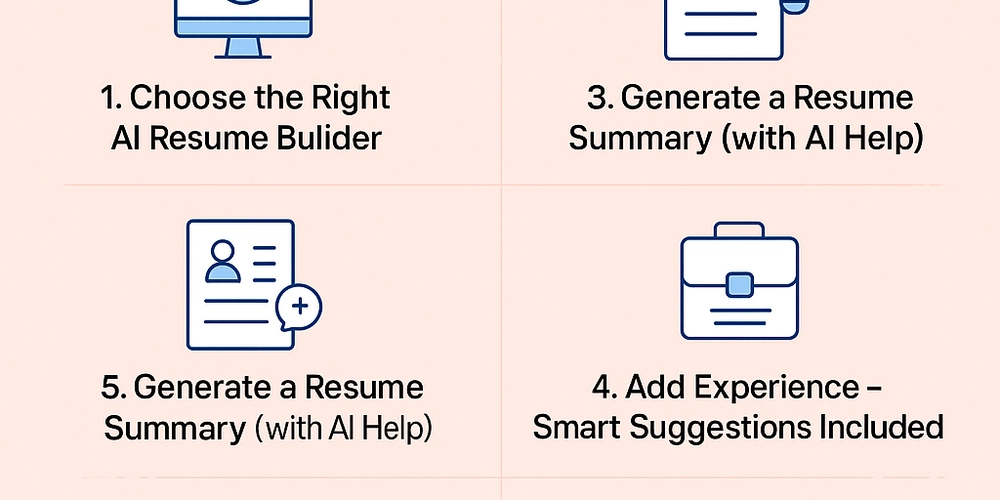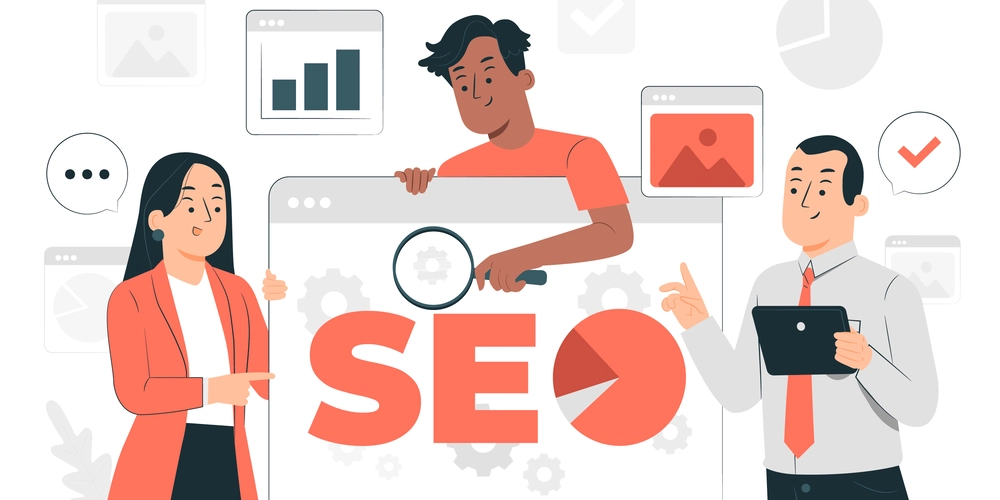AI & The Future of Software Engineering: Rebuilding Legacy ERPs with AI Assistance
Part 3 of "Navigating the New AI Landscape in Software Development" Introduction Throughout this series, I've explored how AI is transforming software development—first through my productivity experiment demonstrating 10x efficiency gains, then by sharing the advanced prompting techniques that made those gains possible. Now, let's turn to one of software engineering's most challenging domains: working with legacy applications. As many of us know all too well, legacy systems present unique challenges. They're often poorly documented, built on outdated technologies, and maintained by teams that have long since moved on. Yet these systems frequently form the backbone of critical business operations. In my 30 years in the industry, I've found few tasks more daunting than modernizing these digital artifacts from another era. But here's the exciting part: AI tools are proving to be remarkably effective allies in this challenging domain. Let me share what I've discovered. The Legacy Challenge Legacy small business ERPs typically come with several obstacles: Monolithic architectures built on outdated frameworks Tightly coupled UI and business logic Complex database schemas with undocumented relationships Business processes embedded in code rather than configuration Limited extensibility for modern integrations Before AI, modernizing these systems often meant months of archaeological code exploration, risky rewrites, and painstaking testing. Today, the landscape is rapidly changing. How AI Changes the Legacy Modernization Equation Consider a hypothetical scenario: modernizing a 12-year-old small business ERP originally built with jQuery and PHP. AI tools could dramatically accelerate several aspects of this process: Code comprehension: AI can analyze and explain complex legacy code segments in minutes rather than hours Documentation generation: Creating missing documentation becomes semi-automated Modernization planning: AI can help identify modernization pathways and potential risks Code transformation: Converting from PHP/jQuery to React/TypeScript with significantly less manual coding Let me walk you through how the PREP method (introduced in Part 2) could be applied to this specific challenge. The PREP Method Applied to Legacy Systems As a reminder, the PREP method consists of: Problem definition: Clearly articulate what you're solving Requirements specification: List constraints and expectations Example integration: Show how this fits into your larger system Pattern suggestion: Guide the AI toward preferred approaches Here's how this framework could be adapted specifically for legacy ERP work: Problem Definition for Legacy ERPs When working with legacy ERPs, providing precise context is crucial. For example, rather than asking "How do I modernize this code?", you'd get much better results with: "I need to modernize this PHP/jQuery ERP application that uses server-rendered pages and AJAX calls for data updates. The inventory management module uses a complex set of database tables with triggers and stored procedures. I need to convert this to a React/TypeScript frontend with a RESTful API backend." The specificity helps the AI understand exactly what technologies are involved and what you're trying to accomplish. Requirements Specification for Legacy ERPs With legacy ERPs, constraints become particularly important. You should typically include: Which business processes must remain unchanged Performance expectations, especially for data-heavy operations Authentication and authorization requirements Data migration approach Training considerations for users Example Integration for Legacy ERPs For legacy ERP work, providing code snippets from multiple parts of the system helps the AI understand interdependencies. You would typically share: UI components and their corresponding backend code Database schemas and queries Business logic implementations Integration points with other modules Pattern Suggestion for Legacy ERPs This is where you guide the AI toward your preferred modernization approach. You would typically specify: React component structure and state management approach TypeScript typing strategy for business entities API design patterns Testing methodology Hypothetical Example: Modernizing an Inventory Management Module Let's imagine modernizing an inventory management module from a PHP/jQuery ERP built in 2011. The original code used server-rendered tables with jQuery for interactivity and a mix of raw SQL and stored procedures. Here's how you might structure your prompt: I need to modernize this PHP/jQuery inventory management module to use React, TypeScript, and a RESTful API. The module handles product inventory with these requirements: - Must maintain all existing inventory adjustment types (purchase, sale, return, etc.) - Must support batch operations for eff

Part 3 of "Navigating the New AI Landscape in Software Development"
Introduction
Throughout this series, I've explored how AI is transforming software development—first through my productivity experiment demonstrating 10x efficiency gains, then by sharing the advanced prompting techniques that made those gains possible. Now, let's turn to one of software engineering's most challenging domains: working with legacy applications.
As many of us know all too well, legacy systems present unique challenges. They're often poorly documented, built on outdated technologies, and maintained by teams that have long since moved on. Yet these systems frequently form the backbone of critical business operations. In my 30 years in the industry, I've found few tasks more daunting than modernizing these digital artifacts from another era.
But here's the exciting part: AI tools are proving to be remarkably effective allies in this challenging domain. Let me share what I've discovered.
The Legacy Challenge
Legacy small business ERPs typically come with several obstacles:
- Monolithic architectures built on outdated frameworks
- Tightly coupled UI and business logic
- Complex database schemas with undocumented relationships
- Business processes embedded in code rather than configuration
- Limited extensibility for modern integrations
Before AI, modernizing these systems often meant months of archaeological code exploration, risky rewrites, and painstaking testing. Today, the landscape is rapidly changing.
How AI Changes the Legacy Modernization Equation
Consider a hypothetical scenario: modernizing a 12-year-old small business ERP originally built with jQuery and PHP. AI tools could dramatically accelerate several aspects of this process:
- Code comprehension: AI can analyze and explain complex legacy code segments in minutes rather than hours
- Documentation generation: Creating missing documentation becomes semi-automated
- Modernization planning: AI can help identify modernization pathways and potential risks
- Code transformation: Converting from PHP/jQuery to React/TypeScript with significantly less manual coding
Let me walk you through how the PREP method (introduced in Part 2) could be applied to this specific challenge.
The PREP Method Applied to Legacy Systems
As a reminder, the PREP method consists of:
Problem definition: Clearly articulate what you're solving
Requirements specification: List constraints and expectations
Example integration: Show how this fits into your larger system
Pattern suggestion: Guide the AI toward preferred approaches
Here's how this framework could be adapted specifically for legacy ERP work:
Problem Definition for Legacy ERPs
When working with legacy ERPs, providing precise context is crucial. For example, rather than asking "How do I modernize this code?", you'd get much better results with:
"I need to modernize this PHP/jQuery ERP application that uses server-rendered pages and AJAX calls for data updates. The inventory management module uses a complex set of database tables with triggers and stored procedures. I need to convert this to a React/TypeScript frontend with a RESTful API backend."
The specificity helps the AI understand exactly what technologies are involved and what you're trying to accomplish.
Requirements Specification for Legacy ERPs
With legacy ERPs, constraints become particularly important. You should typically include:
- Which business processes must remain unchanged
- Performance expectations, especially for data-heavy operations
- Authentication and authorization requirements
- Data migration approach
- Training considerations for users
Example Integration for Legacy ERPs
For legacy ERP work, providing code snippets from multiple parts of the system helps the AI understand interdependencies. You would typically share:
- UI components and their corresponding backend code
- Database schemas and queries
- Business logic implementations
- Integration points with other modules
Pattern Suggestion for Legacy ERPs
This is where you guide the AI toward your preferred modernization approach. You would typically specify:
- React component structure and state management approach
- TypeScript typing strategy for business entities
- API design patterns
- Testing methodology
Hypothetical Example: Modernizing an Inventory Management Module
Let's imagine modernizing an inventory management module from a PHP/jQuery ERP built in 2011. The original code used server-rendered tables with jQuery for interactivity and a mix of raw SQL and stored procedures.
Here's how you might structure your prompt:
I need to modernize this PHP/jQuery inventory management module to use React, TypeScript, and a RESTful API.
The module handles product inventory with these requirements:
- Must maintain all existing inventory adjustment types (purchase, sale, return, etc.)
- Must support batch operations for efficiency
- Must improve search and filtering capabilities
- Must maintain audit trail for all inventory changes
- Should allow offline capability for inventory counts
Here's the core inventory management code:
[code snippet of the original PHP implementation]
Here's the database schema:
[SQL schema for inventory tables]
It integrates with these other modules:
[code snippets showing integration with sales and purchasing]
I'd like to use React with TypeScript, following these patterns:
- React Query for data fetching and caching
- Zod for runtime type validation
- Context API for state management
- Headless UI components for accessibility
- RESTful API endpoints with consistent error handling
This approach could yield remarkable results. The AI might:
- Analyze the existing business logic and data flow
- Propose a component hierarchy for the React frontend
- Design TypeScript interfaces for all inventory entities
- Generate API endpoint specifications
- Create example React components for key functionality
What would typically take weeks of refactoring could be completed in a couple of days. You'd still need to review, test, and refine the generated code, but the productivity gain would be substantial.
Strategies for Different Legacy Challenges
Here are some specialized approaches for common ERP challenges:
1. Deciphering Complex Business Rules
When facing complicated business logic:
- Ask the AI to analyze the code and identify the business rules being implemented
- Request a separation of presentation logic from business logic
- Have the AI generate test cases that would verify these behaviors
- Use this understanding to guide the React component design
2. Handling Data-Intensive Operations
For modules with complex data processing:
- Have the AI analyze the existing queries and data flow
- Request optimized API endpoints that minimize data transfer
- Design React components that efficiently render and update large datasets
- Implement proper loading states and error handling
3. Migrating from Monolith to Microservices
When breaking up a monolithic ERP:
- Use the AI to identify module boundaries and dependencies
- Design API contracts between services
- Create React components that can consume multiple APIs
- Implement proper state management for cross-module data
Measuring Success
Modernization projects can easily go off track without clear metrics. Success could be measured through:
- User experience improvement: Has the modernization made the system more intuitive and efficient?
- Performance gains: Are operations faster in the new system?
- Maintainability: Is the new code more accessible to the current development team?
- Extensibility: How easily can we add new features or integrations?
- Time saved: How much faster was the AI-assisted approach compared to traditional methods?
In our hypothetical project, we might achieve an 80% reduction in modernization time while significantly improving performance and user experience. Business users would likely report that the new inventory system was much more responsive and easier to use.
The Human Element Remains Critical
Despite these advances, the human element remains irreplaceable. AI excels at code transformation but struggles with:
- Understanding the unwritten business processes behind the code
- Identifying user pain points that should be addressed during modernization
- Balancing technical improvements with user training needs
- Making architectural decisions that align with company growth plans
The most effective approach combines AI's ability to rapidly process and transform code with human judgment about what should be preserved, enhanced, or redesigned.
Looking Forward
As AI tools continue to evolve, they'll become increasingly valuable for legacy ERP modernization. Future capabilities might include:
- Automatic generation of data migration scripts
- User interface patterns based on usage analytics
- End-to-end testing against existing system behavior
- Guided refactoring that preserves complex business rules while improving architecture
For experienced engineers like myself, these tools don't threaten our relevance—they amplify our impact. They allow us to focus on the strategic and creative aspects of software engineering while accelerating the mechanical parts of modernization.
Conclusion
Legacy ERP modernization has traditionally been one of software engineering's most challenging domains. With AI assistance, we're seeing a fundamental shift in how these projects can be approached—making them faster, less risky, and more likely to succeed.
By applying structured methods like PREP to legacy challenges, engineers can leverage AI to transform outdated systems into modern, maintainable React/TypeScript applications without losing the critical business logic embedded within them.
In the final article of this series, I'll explore how to design new systems specifically for AI-human collaboration, creating architectures that will remain adaptable as both business needs and AI capabilities evolve.
This is the third article in my series "Navigating the New AI Landscape in Software Development." If you missed the previous installments about my productivity experiment with AI tools or advanced prompting techniques, you can find them [here].
What's been your experience modernizing legacy applications? Have you tried using AI tools for this purpose? Share your thoughts in the comments.
About the author: I'm a software engineer with 10 years of dedicated engineering experience and nearly 30 years in the IT industry overall. My career has spanned organizations of all sizes—from large corporations like Nortel (a major Cisco competitor in its day) to most recently a startup with just 6 employees. Currently seeking my next opportunity, I'm deeply invested in understanding how AI is reshaping our industry and what it means for experienced engineers like myself.




























![[Webinar] AI Is Already Inside Your SaaS Stack — Learn How to Prevent the Next Silent Breach](https://blogger.googleusercontent.com/img/b/R29vZ2xl/AVvXsEiOWn65wd33dg2uO99NrtKbpYLfcepwOLidQDMls0HXKlA91k6HURluRA4WXgJRAZldEe1VReMQZyyYt1PgnoAn5JPpILsWlXIzmrBSs_TBoyPwO7hZrWouBg2-O3mdeoeSGY-l9_bsZB7vbpKjTSvG93zNytjxgTaMPqo9iq9Z5pGa05CJOs9uXpwHFT4/s1600/ai-cyber.jpg?#)













































































































































![[The AI Show Episode 144]: ChatGPT’s New Memory, Shopify CEO’s Leaked “AI First” Memo, Google Cloud Next Releases, o3 and o4-mini Coming Soon & Llama 4’s Rocky Launch](https://www.marketingaiinstitute.com/hubfs/ep%20144%20cover.png)




































































































































































































![Rogue Company Elite tier list of best characters [April 2025]](https://media.pocketgamer.com/artwork/na-33136-1657102075/rogue-company-ios-android-tier-cover.jpg?#)








































































_Andreas_Prott_Alamy.jpg?width=1280&auto=webp&quality=80&disable=upscale#)




























































































![What’s new in Android’s April 2025 Google System Updates [U: 4/18]](https://i0.wp.com/9to5google.com/wp-content/uploads/sites/4/2025/01/google-play-services-3.jpg?resize=1200%2C628&quality=82&strip=all&ssl=1)










![Apple Watch Series 10 Back On Sale for $299! [Lowest Price Ever]](https://www.iclarified.com/images/news/96657/96657/96657-640.jpg)
![EU Postpones Apple App Store Fines Amid Tariff Negotiations [Report]](https://www.iclarified.com/images/news/97068/97068/97068-640.jpg)
![Apple Slips to Fifth in China's Smartphone Market with 9% Decline [Report]](https://www.iclarified.com/images/news/97065/97065/97065-640.jpg)


































































































































